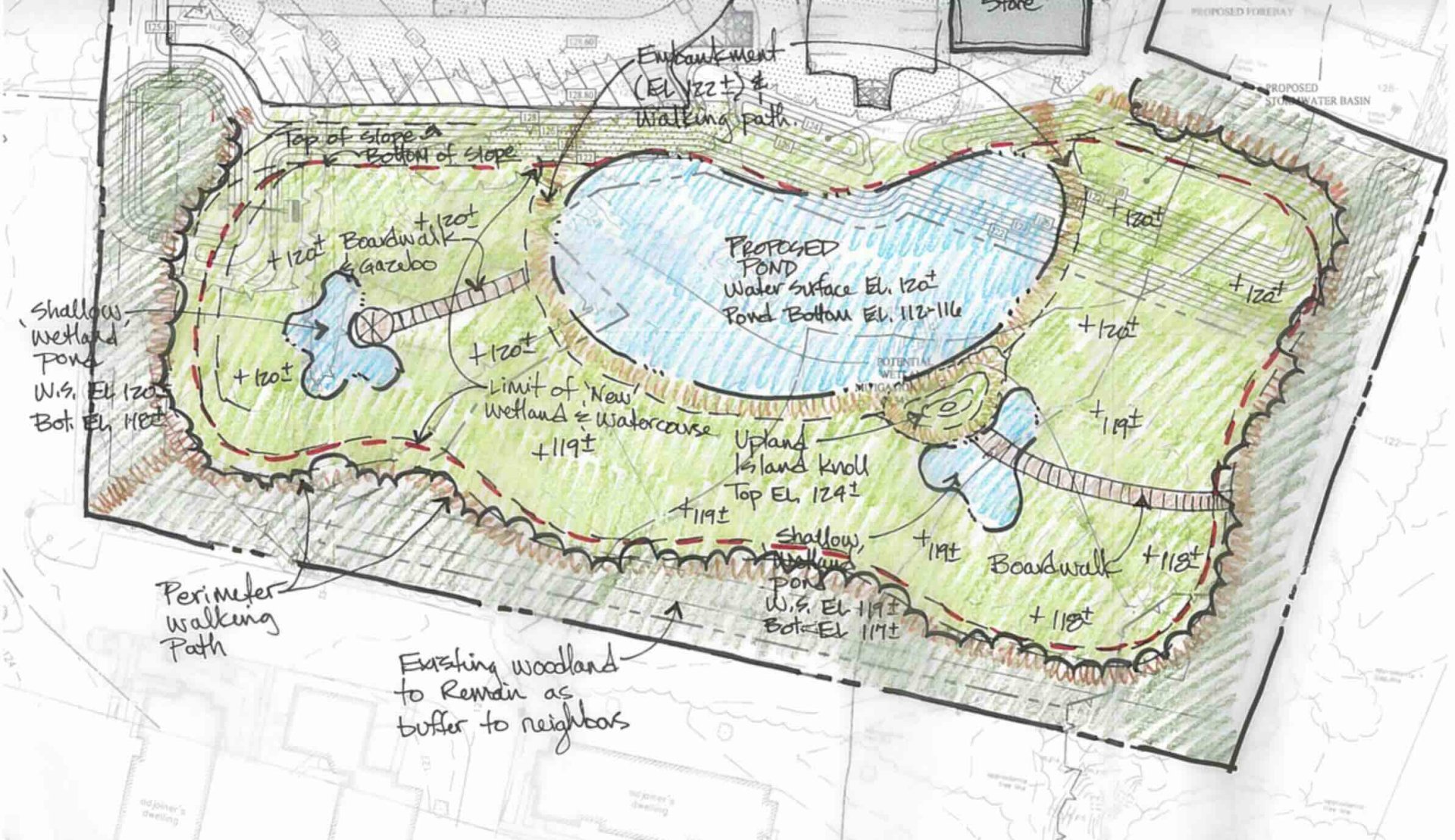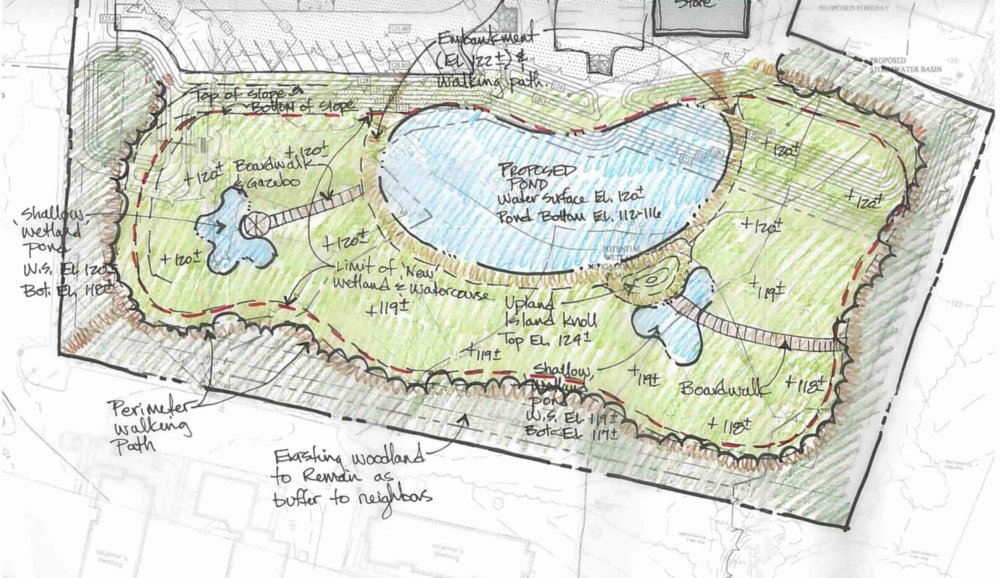Balancing Environmental Protection with Development Needs
December 12th, 2024
In the Northeast, balancing the preservation of ecosystems with the demands of development is a complex but essential endeavor. Wetlands, wildlife habitat, and other natural resources are vital to environmental health, providing critical ecosystem solutions such as water filtration, flood control, and biodiversity support. At the same time, communities and businesses demand growth, infrastructure, and housing to thrive. The challenge lies in finding a balance where development and conservation coexist harmoniously.
Through thoughtful planning, innovative engineering, and adherence to environmental regulations, developers and design professionals can create projects that respect nature while achieving their objectives.
The Importance of Environmental Stewardship in Development
Wetlands, wildlife habitats, and other natural areas are valuable resources. They support diverse plant and animal species, regulate water cycles, and are natural carbon sinks, helping to mitigate climate change. However, urban expansion and development often encroach on these areas, leading to habitat loss, pollution, and ecosystem degradation.
Environmental stewardship is not just a regulatory obligation; it is a moral and practical responsibility. Developing strategies that integrate environmental protection into project design is essential for ensuring long-term sustainability and community resilience.
Preserving Wetlands: Strategies and Practices
Wetlands are among the most sensitive and regulated ecosystems in the Northeast. Federal laws, such as the Clean Water Act, as well as state and local regulations require a thorough assessment and permitting processes for any development that may impact these areas.
1. Avoidance and Minimization
During the assessment and planning phase, developers should prioritize sites that do not impact wetlands and other sensitive habitats. When impacts are unavoidable, minimization strategies, such as reducing the project footprint or clustering development, can significantly lessen environmental disruption.
2. Wetland Mitigation and Restoration
When development encroaches on wetlands, mitigation measures are often required. These measures may include restoring degraded wetlands, creating new ones, or enhancing existing ecosystems. Successful mitigation involves careful site assessment, selection, native vegetation planting, and ongoing monitoring to ensure long-term viability.
3. Buffer Zones
Establishing and maintaining buffer zones around wetlands helps to protect them from the indirect impacts of development, such as runoff, pollution, and human disturbance. Vegetative buffers also improve water quality by filtering sediments and nutrients before they reach wetland areas.

Example of a wetland diagram used at the onset of a project. Courtesy of William Kenny Associates.
Managing Wildlife Habitats Amid Development
Wildlife habitats often overlap with areas slated for development, requiring strategies that protect species while accommodating growth. Habitat preservation is critical for maintaining biodiversity and ecological balance.
1. Conducting Environmental Assessments
Thorough environmental assessments identify sensitive habitats and species present in a project area. This information is essential for avoiding harm and complying with regulations such as the Endangered Species Act.
2. Creating Wildlife Corridors
Fragmentation of habitats is a common consequence of development. By incorporating wildlife corridors—natural pathways that connect fragmented habitats—developers can ensure species have access to essential resources, breeding grounds, and migration routes.
3. Sustainable Landscape Design
Incorporating native plants and landscape features into a project supports local ecosystems. These elements can provide food, shelter, and nesting sites for wildlife, helping to offset habitat loss.

Example of an illustrated landscaping plan that includes a buffer zone, courtesy of William Kenny Associates.
Compliance with Environmental Regulations.
The Northeastern US has a stringent regulatory environment, reflecting the importance of protecting its diverse natural resources. Compliance with local, state, and federal laws is not only mandatory but also a framework for achieving sustainable development.
1. Navigating the Permitting Process
Environmental permitting can be complex and time-consuming. Engaging experts who have experience in regulatory processes ensure that projects comply with requirements such as wetland permits, stormwater management plans, and wildlife protection measures.
2. Stormwater Management
Stormwater management is a critical regulatory focus, particularly in urban and suburban areas. Best management practices (BMPs) such as bioswales, permeable pavements, and detention basins mitigate the impacts of runoff on local water bodies. These systems are often integrated into project designs to meet both functional and environmental goals.
3. Adhering to Local Ordinances
In addition to federal and state laws, many municipalities in the Northeast have specific environmental regulations. These may include tree assessment and preservation requirements, floodplain management, or guidelines for green infrastructure. Early coordination with local officials helps streamline the approval process and ensures compliance.
Leveraging Innovative Solutions
Modern engineering and design tools offer powerful solutions for balancing development with environmental protection.
1. GIS and Mapping Technologies
Geospatial tools enable developers to assess site conditions, identify potentially sensitive areas, and plan projects. By overlaying maps of wetlands, floodplains, and habitats, these technologies guide decision-making and help minimize environmental impacts.
2. Green Infrastructure
Green infrastructure integrates natural processes into urban environments, reducing the footprint of development. Examples include green roofs, rain gardens, bioswales and living shorelines, which not only treat stormwater, improve water quality and mitigate flooding but also enhance habitat and biodiversity.
3. Low-Impact Development (LID)
LID techniques focus on preserving natural hydrology and maintaining a site’s pre-development runoff rates and volumes. Strategies such as reducing impervious surfaces, preserving vegetation, and incorporating on-site water retention align development with ecological principles.
Collaborating for Success
Effective collaboration between engineers, landscape architects, environmental consultants, and regulatory agencies is essential for achieving balance. Early and ongoing communication fosters a shared understanding of project goals and environmental constraints.
At Solli Engineering, our multidisciplinary approach ensures that projects meet environmental and development objectives seamlessly. By integrating expertise in site planning, stormwater management, and ecological design, we help clients navigate regulatory challenges while delivering sustainable outcomes.
The Path Forward
As communities across the Northeast continue to grow, the need for development will persist. However, the importance of preserving natural resources cannot be overstated. By embracing innovative strategies and adhering to a spirit of stewardship, developers can create projects that respect both human and environmental needs.
Balancing development and environmental protection is not a compromise—it is a commitment to building a future where growth and sustainability go hand in hand. Through thoughtful design, strategic planning, and a dedication to collaboration, we can continue to demonstrate a model of responsible development.









